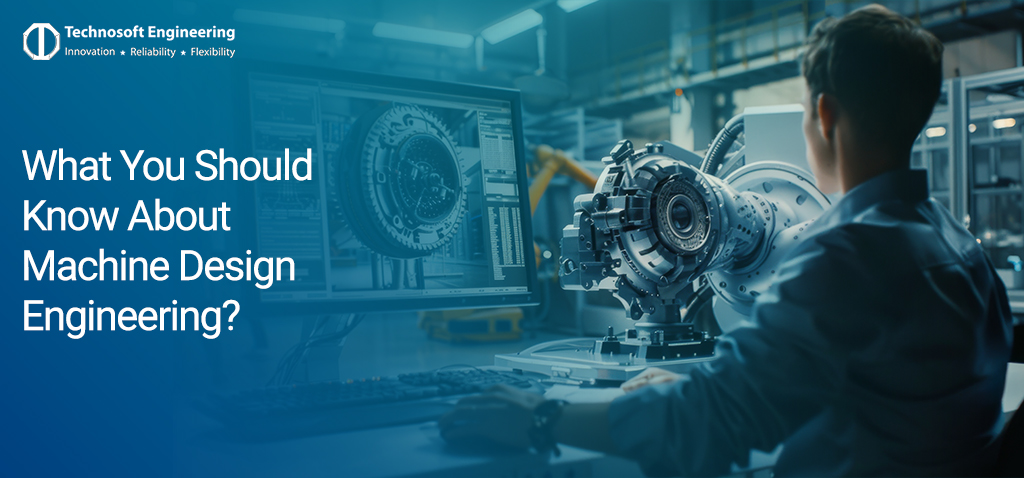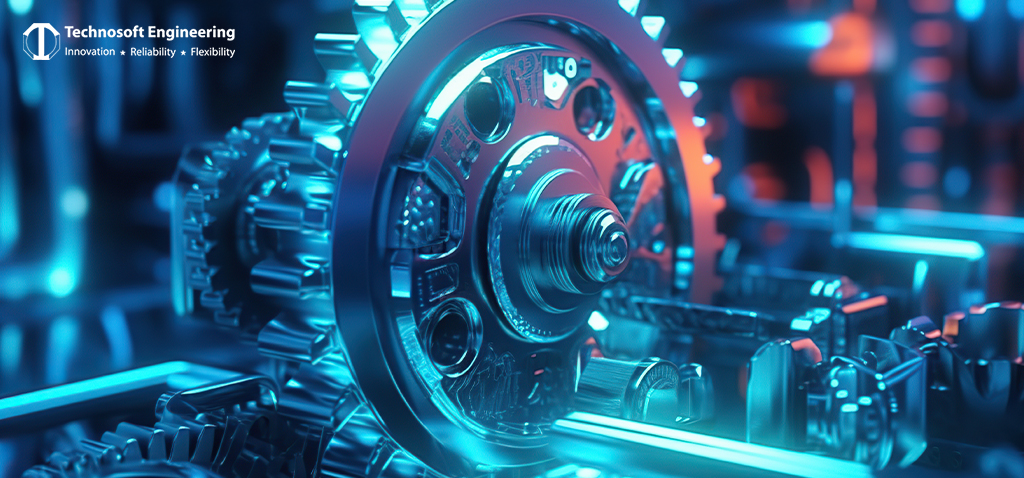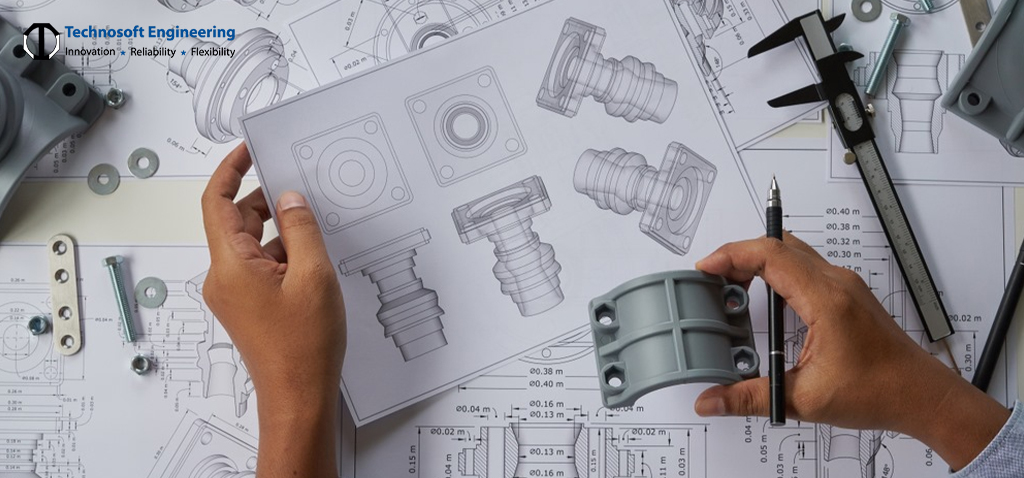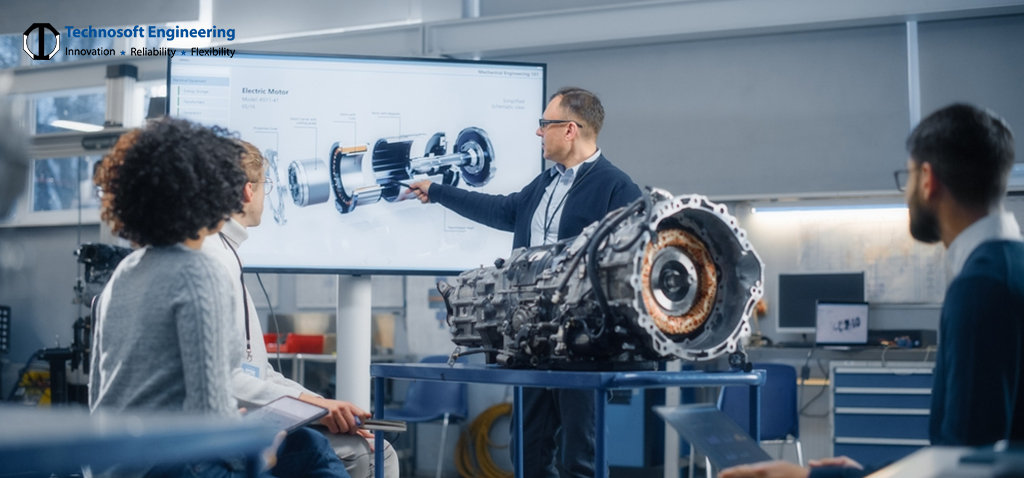
Key Takeaways
In this article, you will know more about machine design engineering and the steps followed during the process.
Introduction
In the dynamic business world, machine design engineering will enable organizations to develop solutions according to their customers’ needs. Well-designed machines will surely boost productivity and efficiency while reducing the impact on the environment. The engineering domain will also play a role in helping organizations thrive in an evolving world. They can further stay ahead of their competitors, meet customer demands, and unveil new opportunities for growth.
What is Machine Design Engineering?
In machine design engineering, professionals use physics to build tools and machines. This discipline of engineering further uses material science, mathematics, and engineering to design tools and machines.
During the manufacturing process, professionals focus on using mechanical, electrical, and hydraulic components. This combination of components helps to develop the tools effectively. Moreover, a high level of physics and mathematics is also used by engineers to produce the desired product. But, before commencing machine design, the engineer should assess the machine or tool’s precision. This, eventually, helps to present a design with the expected performance.
What is a Machine?
In Latin, ‘machine’ implies ‘a tool that can be useful to mankind’. When you come across a machine, it’s designed to carry out a certain task or action with the utilization of energy. For instance, machines can either be simple devices like pulleys or levers or complex systems like industrial robots and computers. Usually, an input is given to machines, and this is processed ahead to produce an output.
When you observe a machine, it is built using many components, which are nothing but ‘the building blocks’ of machines. Under such components, professionals cover structural members, electrical components, and fasteners. Once professionals assemble different components, only then will the team be able to build a machine. For instance, an automobile is developed with the assembly of numerous parts that fit together to add to the operation of the vehicle.
What Are Elements of a Machine?
As mentioned earlier, machine elements are building blocks for machines.
Structural Components:
These refer to the physical parts that connect numerous elements together. While these offer a framework, they also provide stability essential for the smooth functioning of machines. Solid components further fall under non-linear and linear parts. While linear parts displace under load, non-linear components play their role only when force or torque is applied.
Control System:
Many machines have a control system that ensures efficient functioning. Such systems can be a simple control mechanism or an automated system that is complex in nature.
Processing Mechanism:
This element of the machine is important because it performs the actual work. Such a system can be a set of levers and gears, a circuit, or a combination of other mechanisms.
In addition, machines may have air ducts, control pipelines, pressure vessels, and more fluid elements. Engineers may also use spindles, shafts, couplings, bearings, etc. while constructing machines.

What Is Mechanism?
A mechanism is a system having interconnected parts that accomplish a task. When solid and fluid elements work together, the machine can deliver more output. For instance, in an automobile, the motor drives the wheels and the gears transfer engine power to the drive axles.
Now, let’s quickly review various mechanisms.
Cylindrical Mechanism
In cylindrical mechanisms, a component spins around a non-perpendicular line through the center of rotation.
Planar Mechanisms
This mechanism involves motion of components in one position. In other words, the motion of components can be represented by a flat surface because the motion is restricted to two dimensions.
Spherical Mechanisms
In such mechanisms, only one link rotates around a center of rotation.
What Are The Various Types Of Machines?
With time passing by, machines can generally fall under three types.
Mechanical Devices
These are simple devices which use energy for a certain purpose.
Machines
This category includes complicated devices that execute tasks and transfer power from one place to another.
Systems
A system forms when two or more machines work together to achieve a task.

What Are the Different Types Of Machine Design?
Design is always important in machine design engineering. A designer first draws the machine he wants to design. This sketch helps to comprehend the concept and the need for building the machine. By reviewing the sketch, the designer learns how the machine can address a problem.
Professional designers initially start by defining problems. Design development and analysis using math and engineering science follows later. Many design engineers visualize machinery using CAD software.
Now, let’s examine machine design types.
- Engineers may be actively involved in designing a functional machine with the representation of shape and tolerances.
- Machine design may also involve studying how machines perform in a given environment.
- Designing the layout of a machine and determining its operations can also be another type of machine design. This helps while designing a product based on its operations.
What Are The Types Of Machine Design Engineers?
In today’s world, modern machine design engineers specialize in designing machinery. Machines are also designed using physics, arithmetic, and mechanical engineering. To satisfy consumers, they may create new equipment or change old designs. The process can produce a machine or parts like coupling.
Cars, planes, ships, and other manufacturing equipment are even designed by machine designers. A machine is later tested under various situations after its components are assembled. Let’s go through different machine design engineers.
Product Design Engineers
When a professional is involved in developing products, he is known as a product design engineer. While such professionals are creative and business-oriented, they also possess engineering skills that are required to create a viable product. In contrast, such engineers use CNC machines or any other machinery to develop prototypes. As the prototype is tested under different environments, these professionals will also be involved in redesigning certain product features.
Industrial Design Engineers
These engineers simplify features and appeal to different clients. Design engineers collaborate with manufacturers and use electrical and mechanical engineering skills for product design. As these engineers consider prevalent design trends, they can also drive innovation in products. But, once the design is ready for manufacturing, they ensure that it complies with various regulations and industry standards.
Mechanical Design Engineers
Such design engineers are responsible for creating the product’s structure, and important components. They play their role before an industrial engineer proceeds in creating the form. Besides different skills, these professionals should have in-depth knowledge about materials that have to be used in making the product. In some situations, mechanical design engineers may also be involved in quality control. Mechanical design engineers also carry out finite element analysis (FEA) to assess the durability and structural integrity of the product.
Process Design Engineers
These engineers design gas processing plants, oil refineries, and generators. As they work with managers, electricians, mechanical engineers and more, they create systems that have the potential of manufacturing products efficiently. Some engineers generate product blueprints using CAD software. But, while they are working with diverse professionals, they have to frequently consult industrial engineers because a system has to be eventually built into a structure.

What Is A Machine Design Procedure?
There are numerous steps involved in designing machines. Let’s go through the steps one after the other.
Defining the problem
In the beginning, engineers define the problems and analyze project requirements. This is done by comprehending the objectives, and client’s needs. They may also involve stakeholders to present the scope and define several specifications.
Forming a conceptual design
Through brainstorming sessions, professionals generate design concepts and select the ones depending on functionality and project goals.
Presenting preliminary layout
By developing the preliminary design layout, engineers now determine the overall structure and the placement of components. At this stage, they may consider factors like space constraints and requirements related to integration.
Creating detailed design
With the help of a CAD software, engineers create a detailed design of the components and systems. Engineering analysis also helps to validate the design, and optimize performance. While they move ahead with this step, they may consider aspects like motion control, material selection and structural integrity.
Developing a prototype
Soon after creating a detailed design, engineers are involved in building a prototype. This steps help to confirm design functionality and manufacturability. Additionally, engineers carry out various tests to find out flaws, and improve product design accordingly.
Eventually, engineers will make the product design ready for manufacturing at the site.
Machine Design Engineering Drawings
Many engineering drawings show details of products in various ways.
Assembly Drawings
This drawing shows how machine components are assembled for the machine. The drawing also includes the part list and bill of materials.
Detail Drawings
Engineers think about detail drawings only when they have to show individual components with every single detail. Dimensions, key specifications, and tolerances are included in such drawings.
Orthographic Drawings
Orthographics drawings allow design engineers to inspect machinery in three dimensions to confirm detail drawings.
Piping and Instrumentation Diagrams (P&IDs)
These detailed diagrams depict valves, pipe arrangement, and machine parts. Once someone goes through the diagrams, they can find problems that can affect product functionality.
Structural Drawings
Structural drawings represent the machine’s structure and its components. Once you observe such drawings closely, you will also be aware of joints between machine parts.
Wiring Diagrams
These diagrams show electrical connections with machines. As soon as professionals refer to wiring diagrams, they can identify problems in the wiring systems.
3D models
Such models are digital representations of machines that are created through CAD software. They are usually used to confirm accuracy in machine designs.
Partner with Technosoft Engineering
When you approach Technosoft Engineering for machine design, the team takes design aspirations to a new level. Your organization is sure to gain the most from the expertise because we assure you to build machines with durability and performance in mind. While we move ahead with manufacturing processes, we ensure to develop machines cost-effectively.
Closing Thoughts
Finally, machine design is soon going to evolve as industries continue to progress in the forthcoming years. Moreover, the entire design process will have the potential to design complex machines with cutting-edge technologies. With time, the designing process will also shape the future of machines and the way they need to operate at organizations. Manufacturing industries will also perceive the difference while producing diverse products.

